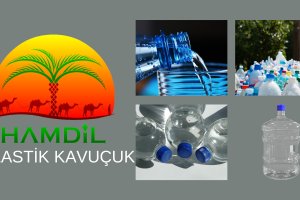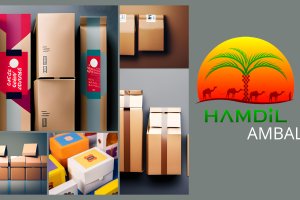
Plastic Rubber
History of Plastic Rubber
- We sell Plastic Rubber. Please contact us to find out the price or to purchase.
History of Rubber
- Although its raw material is rubber, rubber is a substance obtained by combining rubber obtained naturally from the milky sap (latex) of some tropical plants with petroleum and alcohol. Rubber, which was identified by French scientists in South America in 1736 and hardened with sulfur by Charles Goodyear in the early 1840s, has taken its place in the industry and gained commercial importance since these years.
- This method of Goodyear was improved over time by adding some chemicals that accelerate the sulfurization process and increase the rubber's resistance to breaking. First, rubber was obtained as "sulfur + rubber" and later, as it gained importance, it was improved by adding foreign substances into the tire. In addition, dyestuffs were added and the production of rubber and plastic in different colors began. In order to have a long life against the effects of weather, plastic phenols, amines and also some salts have been added to the tire, and in order to increase its durability, amorphous carbon has been added to the tire and oils to give it softness. In parallel with the developing technology, multi-purpose special tires are produced today, thanks to different raw materials, and a variety of them are produced. parts are made.
- Special purpose tires; It is widely used in the production of machine belts, hoses, automobile tires and similar parts that show high pressure and strength. In addition, the wedges used in cutting and plastering molds are durable, elastic materials and have been manufactured successfully recently.
- Rubber, the most basic raw material of tire compound, is never used alone. Generally, a tire compound contains 30-50% rubber by weight.
Natural Rubber (NR)
- Natural rubber is produced from a milky fluid composed of the rubber tree Hevea brasiliensis. natural rubber,
- 30-40% rubber (cis-1,4 polyisoprene),
- 2% resin,
- 60-65% water,
- It consists of 2-5% lipid and protein.
Natural Rubber
- Conveyor belts, rubber roller and wheels etc. industrial products such as; fan belts, radiator hoses, etc. automotive products such as; rubber gloves, toys, sanitary products, etc. It is the basic raw material of latex products and adhesives.
- The areas where it is consumed much more are vehicle tires and shoe sectors.
Synthetic Rubbers
- Synthetic rubbers are the chemical compounds most commonly used in tire compounds.
Styrene Butadiene Rubber (SBR):
- It is a copolymer of styrene and butadiene produced in a continuous system with a cold type recipe, obtained by Emulsion Polymerization and containing 22.5% - 24.5% bound styrene, and is a general purpose rubber. It is very resistant to high temperatures, oils and solvents. Carbon black and other fillers need to be added to improve its physical properties.
- Styrene Butadiene Rubber; It is used in the production of materials such as automobile tires, conveyor belts, hoses, shoe soles and heels, mechanical items, and car mats.
Butyl Rubber (IIR)
- It has a tight structure. It has little flexibility. Its deformation is slow and its permeability is low. Its structure enables crystallization and self-reinforcement under tension. It needs isoprene groups for cross-linking, but its structure is inert.
Polybutadiene (BR):
- Reinforcement is needed because the freedom to rotate around the double bond, the short self-assembly time, and the exposed groups prevent crystallization. Double bonds provide its reactivity.
Ethylene Propylene (EPDM):
- It has a saturated structure, has low mobility and takes a long time to recover. It may have an unsaturated thermonomer for cross-linking.
Nitrile Rubber (NBR):
- It usually contains 25–40% acrylonitrile. Its mobility is limited by hydrogen bonds. Exposed groups prevent crystallization in the tensioner. Increasing C=N (acrylo nitrile) groups increases resistance to oil and decreases resilience.
Polyurethane Rubber (AU):
- Its structure has infinite variability. It becomes a sponge by removing water and CO2. Its structure provides oil and fuel resistance. But it hydrolyzes. Its mobility is moderate. It can be self-reinforced.
Neoprene Rubber (EU):
- Generally, double bonds are unreactive due to the stabilizing effect of 1,4 trans chlorine. Vulcanization occurs by adding 1,4. Chlorine oil has a positive effect on fuel and flammability. Its structure is similar to natural rubber in terms of its mobility, but its crystallization has the opposite effect on its low temperature properties.
- It is used in areas similar to natural rubber, except for auto tires, where ozone, air, fuel, oil and combustion resistance is required. Its application area is limited due to its high price and low heat resistance properties.
Silicone Rubbers (Si):
- It has high mobility due to its O-Si-O skeleton. Interchain powers are very weak. It does not crystallize when stretched. He is very determined.
Polyacrylates (ACM):
- Since it is cross-linked, approximately 5% chloroethyl vinylether, its mobility is low due to steric structure and polar forces. It does not crystallize. It is generally inert.
Fluoroelastomers (FPM):
- C-F group provides good fuel and oil resistance, good heat resistance and low flammability. It crystallizes when stretched and low temperature flexibility is not good.
- Tire dough is prepared in dough machines or mixers. Different formulas are used depending on the product to be obtained. These formulas can only be obtained after many experiments and determination of their usage areas.
Raw Materials
Rubber Raw Material
Nitrile Rubber (NBR)
- It is a general-purpose material that is resistant to oil and grease, recommended for most seal applications. There are different mixtures for fuels and industrial fluids. It has poor resistance to glycol-based brake oils and EP additive oils. Nitrile rubber is typically used at temperatures between -40°C and 105°C, withstands up to 120°C in intermittent operation. It is preferred in terms of price/function balance.
- In gasket production, cork-filled nitrile mixtures are used. The strength properties of these materials are like standard nitrile. The presence of cork also provides the property of compressibility (volume shrinkage). Cork nitrile is only used in static applications.
Polyacrylic Rubber (ACM)
- It is more durable than nitrile rubber at high temperatures and in EP added oils. It is generally used up to 150 °C. Ozone resistance is good. Fuel resistance and low temperature resistance are poor (-30 °C min.). It is especially used in gear box seals.
Silicone Rubber (MQ, VMQ, PVMQ)
- It is used between -60°C and 200°C. It is intermittently resistant to 250 °C. Its main area of use is crank seals. It has high flexibility, weather resistance and ozone resistance. It is not recommended for fuels, oils with EP additives and applications requiring high mechanical properties.
Fluorocarbon Rubber (FKM)
- Can be used between -40°C and 150°C. It has good resistance to phosphate ester fluids, glycol-based brake oils, water vapor, ozone and weather conditions. Not suitable for fuels and petroleum based oils.
Styrene Butadiene Rubber (SBR)
- It is resistant to glycol-based brake oils, acids, bases and alcohol. This material is used between -50°C and 100°C. It is not resistant to fuels and petroleum-based oils.
Natural Rubber (NR)
- The operating temperature range is -60 ° C to 90 ° C. It shows similar properties to SBR in terms of environmental resistance. It is used in places requiring high flexibility and mechanical properties.
Polytetrafluoroethylene (PTFE)
- It is a plastic material that is resistant to almost all chemicals used in industry. It has usage areas between -260 ° C and 260 ° C. It is the solid material with the lowest coefficient of friction. It is a non-adhesive, non-lubricated bearing material. Some types are very good electrical insulators. Depending on the application area, pure, glass fiber, carbon, graphite, bronze, molybdenum sulfide PTFE is used.
Polyamide (PA)
- It is commonly known as "nylon". Can be used between -20°C and 90°C. In special types, the usage limit can be up to 140 ° C. Friction and wear properties are very good. It is resistant to oils, fuels, esters and ketones.
Hydrogenated Nitrile Rubber (HNBR)
- Hydrogenated nitrile rubber is derived from NBR polymers. The characteristics of the materials prepared in this way are that they have high mechanical strength and are more resistant to abrasion. Media durability is like that of NBR. The usage limit is 150 ºC.
Thermoplastic Polyurethane (TPU)
- TPU has good mechanical properties that allow it to be effectively processed by injection molding. The main advantages of TPU are high resistance to abrasion; a wide temperature range flexibility; Resistance to oils, greases and many solvents.
Plastic Injection Molding Machine
- We sell Plastic Injection Machines. Please contact us to get a quote or purchase.
Polyamide (PA)
- It is commonly known as "nylon". Can be used between -20°C and 90°C. In special types, the usage limit can be up to 140 ° C. Friction and wear properties are very good. It is resistant to oils, fuels, esters and ketones.
Hydrogenated Nitrile Rubber (HNBR)
- Hydrogenated nitrile rubber is derived from NBR polymers. The characteristics of the materials prepared in this way are that they have high mechanical strength and are more resistant to abrasion. Media durability is like that of NBR. The usage limit is 150 ºC.
Thermoplastic Polyurethane (TPU)
- TPU has good mechanical properties that allow it to be effectively processed by injection molding. The main advantages of TPU are high resistance to abrasion; a wide temperature range flexibility; Resistance to oils, greases and many solvents.
Plastic Injection Molding Machine
- We sell Plastic Injection Machines. Please contact us to get a quote or purchase.Polyamide (PA)
- It is commonly known as "nylon". Can be used between -20°C and 90°C. In special types, the usage limit can be up to 140 ° C. Friction and wear properties are very good. It is resistant to oils, fuels, esters and ketones.
Hydrogenated Nitrile Rubber (HNBR)
- Hydrogenated nitrile rubber is derived from NBR polymers. The characteristics of the materials prepared in this way are that they have high mechanical strength and are more resistant to abrasion. Media durability is like that of NBR. The usage limit is 150 ºC.
Thermoplastic Polyurethane (TPU)
- TPU has good mechanical properties that allow it to be effectively processed by injection molding. The main advantages of TPU are high resistance to abrasion; a wide temperature range flexibility; Resistance to oils, greases and many solvents.
Plastic Injection Molding Machine
- We sell Plastic Injection Machines. Please contact us to get a quote or purchase.





